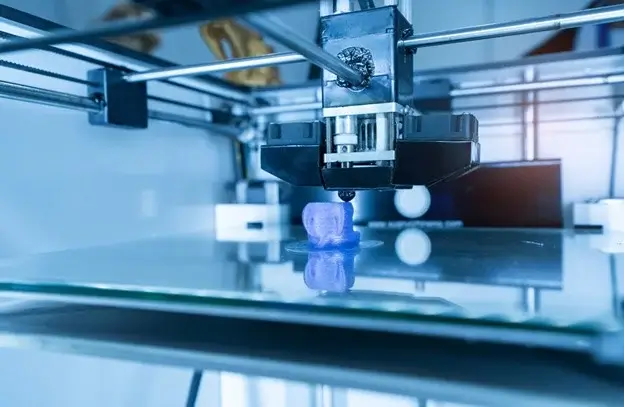3D printing, also known as additive manufacturing, is a technology that creates three-dimensional objects by depositing sequential layers of material. This process differs significantly from traditional subtractive manufacturing, in which parts are cut or machined from a single piece of material.
Types of 3D Printers
There are different types of 3D printers. printers, each using unique technologies and materials. The main types of printers include:
Industrial 3D Printers
Industrial 3D printers are the most powerful and comprehensive of all printer types. They are designed to produce high quality parts in large volumes. They are commonly used in the aerospace, automotive and medical industries.
Technologies used in industrial 3D printers:
- Layer fusion: A technology in which a material is melted and deposited in layers.
- Selective Laser Melting: A technology in which a material is melted using a laser.
- b>Inkjet printing:A technology in which the printer sprays material in the form of liquid droplets.
Advantages of industrial 3D printers:
- High precision:They can produce parts with high precision and smooth surface.
- High productivity:They can produce large batches of parts within short time.
- Wide range of materials:They can use a wide range of materials, including metals, ceramics and polymers.
Disadvantages industrial 3D printers:
- High cost:They usually cost from hundreds of thousands to millions of dollars.
- High operating costs:They require expensive maintenance and materials.
- Difficulty to operate:They require skilled operators to use.
Professional 3D printers
Professional 3D printers are a compromise between industrial and desktop printers. They are designed for businesses and professionals who require reliable, high-quality printing.
Technologies used in professional 3D printers:
- Fused Deposition Modeling (FDM):A technology in which molten plastic is extruded through a nozzle.
- Stereolithography (SLA):A technology in which ultraviolet light is used to solidify the liquid resin.
- Digital Light Processing (DLP): A technology in which a projector is used to project an image onto a liquid resin, curing it.
Advantages of professional 3D printers:
- High quality: They can produce parts with good surface quality and resolution.
- Reliability:They are more reliable and require less maintenance than industrial printers.
- Affordability:They are more affordable than industrial printers, but still cost more expensive than desktop printers.
Disadvantages of professional 3D printers:
- Limited materials:They typically use less materials than industrial printers.
- Slower production speed:They are slower than industrial printers. li>
- Expensive consumables: Supplies for professional printers can be relatively expensive.
Photopolymer 3D printers use ultraviolet light to cure liquid resin . These printers are known for their high precision and smooth surfaces.
Technology used in photopolymer 3D printers:
- Stereolithography (SLA) :A technology in which ultraviolet light is used to cure liquid resin layer by layer.
- Digital Light Processing (DLP): A technology in which a projector is used to project an image onto the liquid resin, curing it.
Advantages of photopolymer 3D printers:
- Very high precision: They can produce parts with very high precision and smooth surfaces.
- Detailed models:They can produce models with complex parts and complex geometries.
- Wide range of resins:They can use a wide range of resins with different properties.
Disadvantages of photopolymer 3D printers:
- Limited Z-resolution:They have limited Z-resolution, which can result in aliasing on vertical surfaces.
- Long post-processing: Models printed on photopolymer printers usually require int





